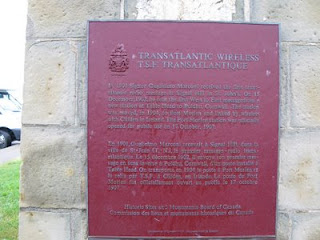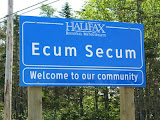
 After leaving Cape Breton, we returned to the Fundy coast area to view the Joggins Fossil Cliffs - a great museum about the massive fossil finds in this area. We had bypassed this area on the way into Nova Scotia because we had to get to Halifax for our reservations at the Royal International Tatoo on Canada Day.
After leaving Cape Breton, we returned to the Fundy coast area to view the Joggins Fossil Cliffs - a great museum about the massive fossil finds in this area. We had bypassed this area on the way into Nova Scotia because we had to get to Halifax for our reservations at the Royal International Tatoo on Canada Day.
The weather wasn't going to cooperate for the next several days, so we decided to head back down to Maine and take our time going to Charlie's through the back roads of Maine, New Hampshire, Vermont and New York.
In Maine, we stopped at Nervous Nellies Jellies and Jams. This is also the home of Peter Beirit, the sculptor of our backyard Alligator. We needed to pick up a replacement section for the Alligator that the termites had decided to have for dinner. While there, we toured some of his other sculptures - a little different, eh? (See, we really did learn 'Canadian'.)



















































